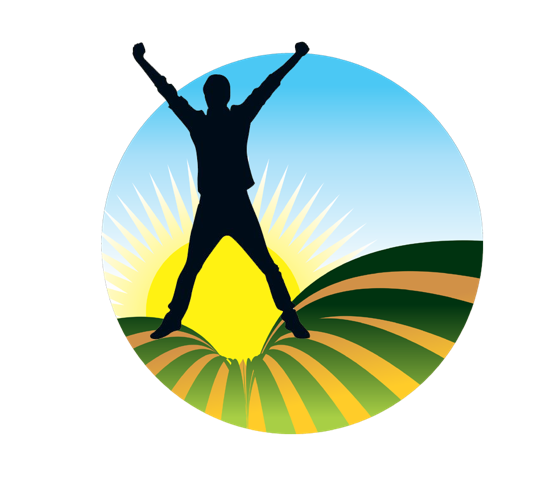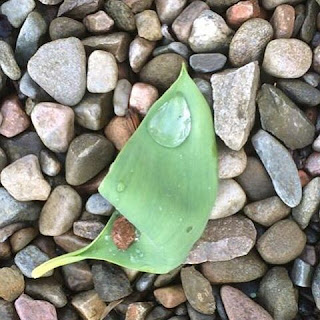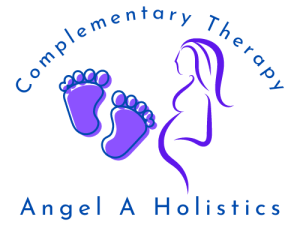Mindfulness Based CBT
Cognitive-Behaviour Therapy (CBT) and Mindfulness Based Cognitive Therapy (MBCT)
Cognitive-behaviour therapy (CBT) and mindfulness based cognitive therapy are available from Derek, who has used this form of therapy within his life coaching sessions for a number of years. This therapy is very effective to all ages, when we have had learned behaviours from others, it can help eradicated fears and phobias, as well ad deal with anger management, stress management, deep traumas from your life.
Be proactive today and take the first step to success.
Cognitive-behaviour therapy is an approach that suggests how we think and interpret situations can have an impact on how we feel and behave. (CBT) breaks down an overwhelming problem into smaller, more manageable parts, making it easier for clients to see how things are connected and the affects they may have. Cognitive-behaviour therapy (CBT) is usually shorter in duration than other ‘talking therapies’ such as counselling, often between 6-12 sessions. This is because the client is expected to take a more active role in therapy by applying the new skills and techniques they have learned to makes changes required to move forward in their life today.
Stop wallowing and procrastinating and take that positive step forward! we don’t have to stay in the victim mode, we can take the control back, forgive and let go of what we cant change but we can change our attitude to the victor mode and continue to be positive rather than negative. A life coaching session with CBT and a combination of therapies can really help, its up to you and all we can do is assist you in the journey of recovery and change to a positive mind set.
Book an appointment today
What is Mindfulness?
Mindfulness meditation practice couldn’t be simpler: take a good seat, pay attention to the breath, and when your attention wanders, return. By following these simple steps, you can get to know yourself up close and personal. In my video above you can try a short mindfulness meditation, listen to the lovely sounds of the water, from River Nevis, beside Ben Nevis, Fort William where I lived.
I remember while doing a mindfulness meditation, I was drawn to a leaf with a tear and I came up with this.
What is Mindfulness?
Lots of people live their life in a mindlessness state. A state where our attention is divided between many things. A state of not really being present in our own lives.
Have you ever eaten a bar of chocolate and suddenly realised that all you had left in the palm of your hand was an empty chocolate bar wrapper? or driven somewhere and you cant even remember the journey. Most of us have!
This is ‘Mindlessness’, a dreamlike state, where we’re not quite there in the moment. In this modern world, we become so busy getting things done, that we fail to notice the beauty of life and how quickly it is passing us by. One of the reasons I was successful with in the Trade Union movement was, I trained myself to be aware in the present moment, also had some very good training from media experts, who trained us to be aware in the present as we never knew when a camera or mic would be put in front of us. I did notice how some of my fellow workers didn’t really listen to what was being said they were being mindless instead of being mindful, this is when negative policy’s or actions get passed because we let them by being mindless in that present moment. so its important to practice being mindful, if the life guard wasn’t focused on what was going on in front of him, he wouldn’t be able to save a life.
Mindfulness is the opposite of mindlessness.
Mindfulness is taking control of our wandering attention and waking up from our dreamlike state. By having an awareness, moment by moment, of our thoughts, emotional and physical feelings as well as our environment, we are being mindful. Mindfulness is also being without judgement. Not judging our thoughts, feelings or our environment, just living with them.
Mindfulness and meditation has always been very important to me in all aspects of my life, You don’t have to be an expert to practice it. I have sat in my car, on trains, riversides like in the video, its not too important the where but here are some pointers I got for you from the internet, as having a bad back myself its important how we sit.
Here’s a posture practice that can be used as the beginning stage of a period of meditation practice or simply as something to do for a minute, maybe to stabilise yourself and find a moment of relaxation before going back into the fray. If you have injuries or other physical difficulties, you can modify this to suit your situation.
1) Take your seat. Whatever you’re sitting on—a chair, a meditation cushion, a park bench—find a spot that gives you a stable, solid seat, not perching or hanging back.
2) Notice what your legs are doing. If on a cushion on the floor, cross your legs comfortably in front of you. (If you already do some kind of seated yoga posture, go ahead.) If on a chair, it’s good if the bottoms of your feet are touching the floor.
3) Straighten—but don’t stiffen— your upper body. The spine has natural curvature. Let it be there. Your head and shoulders can comfortably rest on top of your vertebrae.
4) Situate your upper arms parallel to your upper body. Then let your hands drop onto the tops of your legs. With your upper arms at your sides, your hands will land in the right spot. Too far forward will make you hunch. Too far back will make you stiff. You’re tuning the strings of your body—not too tight and not too loose.
5) Drop your chin a little and let your gaze fall gently downward. You may let your eyelids lower. If you feel the need, you may lower them completely, but it’s not necessary to close your eyes when meditating. You can simply let what appears before your eyes be there without focusing on it.
6) Be there for a few moments. Relax. Now get up and go about your day. And if the next thing on the agenda is doing some mindfulness practice by paying attention to your breath or the sensations in your body, you’ve started off on the right foot—and hands and arms and everything else.
7) Begin again. When your posture is established, feel your breath—or some say “follow” it—as it goes out and as it goes in. (Some versions of the practice put more emphasis on the out-breath, and for the in breath you simply leave a spacious pause.) Inevitably, your attention will leave the breath and wander to other places. When you get around to noticing this—in a few seconds, a minute, five minutes—return your attention to the breath. Don’t bother judging yourself or obsessing over the content of the thoughts. Come back. You go away, you come back.
That’s it. That’s the practice. It’s often been said that it’s very simple, but it’s not necessarily easy. The work is to just keep doing it. Results will accrue.
Keeping notes
Try not to have any expectations about any part of the meditation. Just let your experience be your experience. It is important to note any details as soon as possible following the meditation, as these will be hard to recall later. Every time you carry out the meditation, make a note of your experience
What were your perceptions?
How your experience felt?
Any physical sensations?
Any emotional feelings?
Any thoughts?
Anything else?
I have included some prompts that might be helpful when completing your diary or notes for the first time. These are not meant to persuade you, but simply to get you thinking about your experience in more detail.
|
Possible
associated physical sensations: |
Possible
associated emotional reactions: |
|
|
Itchy
|
Irritable
|
|
|
Light
|
Impatience
|
|
|
Heavy
|
Wanting to stop/continue
|
|
|
Pricky
|
Grief
|
|
|
Numb
|
Surprise
|
|
|
Relaxed
|
Anticipation
|
|
|
Frustration
|
|
|
|
Anger
|
|
|
Possible associated thoughts:
|
|
Past
events, situations |
|
Visions
of the future |
|
Judging
the experience |
|
Thinking
about others |
|
Wishing/hoping
|
|
Planning
|
|
Evaluating
|
|
Comparing
|
One of the things I took from my own Mindfulness learning was to keep a Rain Diary, try this yourself and do your own research and if you need help please get in touch, I use Mindfulness a lot when I life coach clients, before a mediumship reading etc or just before a big event.
Mindfulness RAIN Diary
R – Recognise
A – Allowing
I – Investigating
N – Natural awareness
R – RECOGNISE WHAT IS HAPPENING
You can awaken recognition simply by asking yourself: “What is happening inside me right now?”
Call on your natural curiosity as you focus inward. Try to let go of any preconceived ideas.
A – ALLOW LIFE TO BE JUST AS IT IS
Allowing means, “Letting be”, the thoughts, emotions, feelings, or sensations you discover.
You may feel a natural sense of aversion, wishing that unpleasant feelings would go away. However, with some practise, you will become more willing to be present, with, ‘What is’, and a different quality of attention will emerge.
Allowing is intrinsic to healing, and realising this can give rise to a conscious intention to “let be.”
Instead, listen in a kind, receptive way to your body and heart, bringing awareness to whatever thoughts, emotions, feelings, or sensations are arising, right here and now.
Investigation means calling on your natural interest. It’s the desire to know truth and a more focused attention, to your present experience.
Simply pausing to ask, “What is happening inside me?”, might initiate recognition, but with investigation, you engage in a more active, pointed, line of enquiry. You might ask yourself:
“What most wants attention?”
“How am I experiencing this in my body?”
“What does this feeling want from me?”
We need to offer a gentle welcome to whatever surfaces.
N – NATURAL AWARENESS
The first three steps of RAIN require some intentional activity.
The ’N’ of RAIN, expresses the result; a liberating realisation of your Natural awareness.
There’s nothing to do for this last part of RAIN. Realisation arises spontaneously on its own. We simply rest in Natural awareness.
Questions for RAIN Practise Diary
1. What was the situation?
2. R – Recognising – What was happening inside me?
(body, mind and emotions)
3. A – Allow – How did I let what’s happening, ‘Just be’, as it is?
4. I – Investigate – What happened as I looked closer
(body, mind and emotions), with kindness?
5. N – Natural Awareness What happened next as you opened awareness?
Enjoy practising Mindfulness and if you need help feel free to contact me.
Book now!
Good reading in the Huffington Post
http://www.huffingtonpost.com/elisha-goldstein-phd/7-things-mindful-people-d_b_5413559.html










